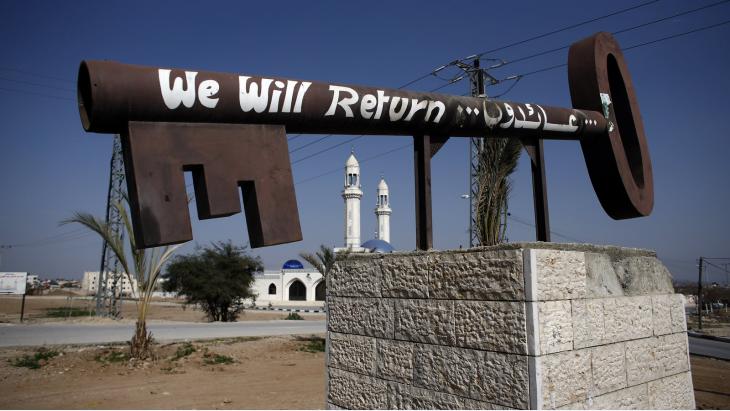“My homeland, even within you my eyes to you are longing.” – The Sea, Sayyed Hijab
Wadi Salib is an old neighborhood located on the lower northeastern slope of Mount Carmel, in the heart of Haifa’s Downtown district. The neighborhood was established at the end of the 19th century, shortly after modern Haifa was established by Daher Al-Omar. By the early 20th century, after the arrival of Jewish settlers, Wadi Salib was, among other neighborhoods, a site of numerous riots between Jewish settlers and Palestinian military units. Palestinians were gradually being displaced from their homeland as a result of intensified fighting, bombing, destruction of buildings, sniper fire and because Jewish settlers had blocked the access roads, isolating the Palestinians and cutting them off from other sections of the city.
By the end of 1948, more than 60,000 Palestinians living in Haifa were displaced and the 6,000 remaining established themselves primarily in Wadi Nisnas, another neighborhood in Downtown Haifa. As Palestinians fled to neighboring cities, such as Acre, and nearby countries like Syria, Jordan and Lebanon, the buildings were left abandoned and partially destroyed. Of course, none of its original inhabitants were allowed to return after the war ended, and till today, the majority live in nearby countries, while others live so close to their childhood homes, passing nearly everyday through the ruins of their past. Their homes became empty, hollow and ruined, while the walls remain until today, standing strong and waiting for their rightful owners who are now refugees in another land.
Law
In 1950, many of the buildings were confiscated after the Israeli government passed the Absentee Owners Property Law, which defines Palestinians who were displaced and left the borders of Palestine until November 1947, especially following the war, as absent. Everything that belonged to them – land, houses, bank accounts and etc. – became “absentee property”, thus, allowing the government the “right” to confiscate it .
This law is Israel’s primary tool to control and own the property of displaced Palestinian refugees, and to quietly wipe out the last remnants of Palestinian rightful ownership.
The “rehabilitation” of Wadi Saleb
In recent years, the Haifa Municipality has begun a comprehensive “rehabilitation” of the neighborhood according to an approved city building plan, which was drawn up more than two decades ago. In May 2016, the cornerstone for the Quarter Project was laid, and in early 2017, the city council approved to let a real estate company named Golden Art to initiate several projects for the purpose of “renovating” the old neighborhood of Wadi Salib. The first project called “The Park House”, aims at preserving a building that was built at the end of the 19th century. It is located in the heart of the park established by the municipality in the center of the neighborhood.
The second project is called “The House of the Agalon Stairs”, which also incorporates the preservation of an old building, whose first floor is made of stone and dates back to the Ottoman period, while the second floor was built during the British rule, with steel and concrete stone cladding. It was originally used as a dwelling edifice and later was converted into a synagogue. According to the plan, the building will undergo a conservation process for residential purposes and is expected to be supplemented by 14 housing units.
The company is also building the Quarter project, which will include 198 apartments in three buildings with a commercial facade, one of which is intended for long-term rentals. Occupancy of these buildings is to be expected this upcoming summer. In addition, adjacent to the project, the municipality built an urban park with an area of 12 dunams, including a promenade overlooking the sea. The park was built as an array of traditional terraces, which were adapted to the nature of the historical buildings that once stood on the slope. The terraces descend in the direction of a banqueting area, which combines stone seats with grass surfaces, and coffee shops and kiosks are planned to stand in the heart of the park.
To live nearby
This project initiated by Haifa’s municipality does not only show the horrors of gentrification, it also demonstrates one of Israel’s primary settler practices: to erase the history of Palestine’s urban space by confiscating both refugees and citizens’ property to incorporate them in its Zionist nation-building vision. One has only to witness the current displacement of Bedouin villages in the South to realize the ongoing Nakba.
In the context of Wadi Salib we have two affected populations: Palestinian refugees and Palestinian citizens of Israel. The former group is twice removed from their urban space: first, their loss is of home and then it is of the physical space and land. They have access to the ruins of their past only through someone else’s eyes or device. The latter group, on the other hand, still has access to the neighborhood, which makes the experience of living so close a distressing testimony of an obliterating process. Some of them perhaps pass near this blighted space often, standing at the edge of its borders, reminiscing about the hours spent in play under the shades of the soft trees.
To live near Wadi Salib is to live longing for a homeland, for a cultural and political urban space. Yet, Haifa today is showing its eagerness in preserving the Palestinian heritage of the city. As Israel tries to constantly destroy every Palestinian aspect of the city, citizens are working to build their own initiatives to reclaim their space. Theaters, organizations, cultural associations and independent festivals are only the beginning of a promising project of holding on to space and land, to our homeland.
This article originally appeared in Pulse Magazine, the magazine of the Palestine Pulse Movement





